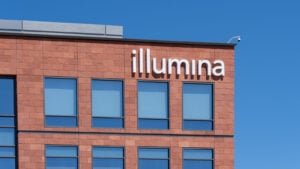
Halloween may be a scary day for some people. But if you’re an investor with F-rated stocks to sell in your portfolio, then you’re likely looking at some terrifyingly low returns this quarter.
F-rated stocks to sell, as ranked by the Portfolio Grader, have all sorts of blemishes that make them unwelcome in any portfolio. Whether it’s a weak financial position, low earnings potential, massive debt, weak profits, or just a poor business; these are businesses that can sink your profits.
And why would you want to put yourself through that? Particularly when you consider what’s known as opportunity cost, the loss of potential gains when the money you had in these F-rated stocks to sell was instead working for you in a better, more profitable equity.
Today we’re using the Portfolio Grader to help you identify some of these stocks to sell. Don’t be afraid to pull the trigger if you have one of these names in your portfolio – or any F-rated stock.
Icahn Enterprises (IEP)
Icahn Enterprises (NASDAQ:IEP) is operated by activist investor Carl Icahn. The company invests in businesses in a variety of sectors. Then, it gets involved (often forcing its involvement) in managing companies in its portfolio to unlock additional value.
Icahn is perhaps best known for acquiring Trans World Airlines in 1985. After cutting costs, selling assets and battling with labor unions, Icahn was able to fund stock buybacks but destabilized the company, which finally went bankrupt in 2001.
Icahn’s current portfolio is primarily energy and healthcare companies. But it’s having a forgettable year, notably after it was targeted by a short-seller report from Hindenberg Research, which said that the company took on too much leverage while encountering sustained losses.
Icahn protested the report, which also accused the company’s $2 per share dividend to be unsustainable. But after IEP reported awful Q2 earnings (a loss of 72 cents per share), Icahn slashed the dividend in half.
Don’t get me wrong, the dividend yield is still huge at 22%. And even if you can ignore the irony of Icahn the activist investor protesting when it’s his company in the crosshairs for once, the bottom line is IEP stock is down nearly 65% this year, making it one of the stocks to sell while you still can.
No wonder it has an “F” rating in the Portfolio Grader.
Illumina (ILMN)

Illumina (NASDAQ:ILMN) is a biotech company that is involved in genomics, or the study of an organism’s DNA, including genes and their interactions, to understand genetics, heredity and biological functions.
However, a lot is going on behind the scenes here. Ichan is also involved here, as he owns 1.4% of the company and won a proxy fight this spring that led to the resignation of Chairman John Thompson. He was replaced by Andrew Teno, who was an Icahn pick.
But if Icahn is going to unlock value with Illumina, he’s off to a slow start. The company’s stock is down 40% this year, with most of that loss coming since May when Ichan won his proxy fight.
Illumina is also struggling with its catastrophic acquisition of Grail, a cancer testing business, in 2021. The company failed to get approval from antitrust regulators before closing the deal. As punishment, European Union regulators assessed a $453 million fine and could force Illumina to sell. U.S. regulators could assess fines as well.
ILMN stock has an “F” rating in the Portfolio Grader.
Dollar General (DG)

Dollar General (NYSE:DG) is a discount retail chain that’s had many problems since CEO Todd Vasos retired in 2022. The stock fell by nearly 60%, prompting an announcement this month that Vasos was returning to the job.
But does that mean the stock will bounce back? Not really. Vasos’ successor tried to combine Dollar General with the company’s other brand, the upscale Popshelf. That didn’t work. The company also had a lot of issues with staffing levels, crime and wages that Vasos will have to unravel.
Dollar General also has to compete with other dollar store chains such as Family Dollar and Dollar Tree (NYSE:DLTR), the latter of which runs both brands. Dollar Tree stock is down 23% this year, but that’s much better than Dollar General’s 52% drop.
DG stock saw same-store sales drop 0.1% on a year-over-year basis in the second quarter, and profits fall by 24%. DG stock has an “F” rating in the Portfolio Grader.
Tyson Foods (TSN)

Tyson Foods (NYSE:TSN) is an important part of the food chain in the U.S., producing nearly 20% of the nation’s beef, pork and chicken. The company makes 70% of its revenue from selling meat.
But the company has also been struggling this year with elevated labor costs, more expensive raw materials and weaker profit margins. Inflation is a problem.
But there’s only so much that Tyson can do to cut costs when it has to purchase commodities like beef, chicken and pork to turn a profit.
Earnings in the third quarter included sales of $13.14 billion, down from $13.49 million a year ago. The company reported an operating loss of $350 million, compared to a profit of $1.03 billion a year ago.
Shifting its focus to prepared food could help if it can increase its profit margins. But for now, TSN stock has an “F” rating in the Portfolio Grader.
Tower Semiconductor (TSEM)
Tower Semiconductor (NASDAQ:TSEM) is an Israeli semiconductor company. It makes advanced analog integrated circuits used in the automotive, consumer, medical, industrial, aerospace and defense sectors.
The company had a huge $5.4 billion deal in place earlier this year that would have seen it purchased by Intel (NASDAQ:INTC) for $53 per share. Intel was hoping that the deal would help it compete in China.
But regulators in Beijing wouldn’t approve the deal and it fell apart. Investors who hoped to cash in at a huge premium scrambled for cover, and now the stock is down 45% on the year.
Intel and Tower did make a subsequent announcement about a foundry agreement in New Mexico, but it’s hard to put the bloom back on the rose. The failure of Tower and Intel to complete the deal has been a major setback and made TSEM one of the stocks to sell to protect your portfolio.
TSEM stock gets an “F” rating in the Portfolio Grader.
Victoria’s Secret (VSCO)

Victoria’s Secret (NYSE:VSCO) is a women’s clothing brand. While it has beauty products, footwear, swimwear and fanny packs, it’s best known for selling its famous lingerie.
But the company’s sales haven’t been keeping up. In the second quarter, revenue of $26 million was a steep drop from a year ago, when the company had $98 million in sales. That resulted in a net loss for the quarter of $1 million or 2 cents per share, versus a profit in the year-ago quarter of $70 million or 83 cents per share.
Victoria’s Secret cites inflated inventories and a challenging macro environment for its problems, which is contributing to worsening sales in North America.
“We have consistently said that we’re on a journey and our brand revolution and our strategy will not return their full potential overnight,” CEO Martin Waters said. “Just over two years since becoming a stand-alone public company, the VS&Co story remains one of opportunity.”
Perhaps, but that time hasn’t come yet. As Victoria Secret launches what’s expected to be a significant marketing campaign heading into the holiday season, its Q3 guidance calls for an operating loss of between $45 million and $65 million, or a range of 70 cents to 90 cents per share. That is easily one of the stocks to sell before it sinks even lower.
VSCO stock is down 48% this year, and gets an “F” rating in the Portfolio Grader.
Paramount Global (PARA)

Paramount Global (NASDAQ:PARA) is a well-known mass media company. Previously known as ViacomCBS, Paramount has a major TV network, Paramount Studios and a relatively new streaming service, Paramount Plus.
But the stock hasn’t been a winner this year, down 33% since January first. Much of that came in May when Paramount slashed its dividend from 24 cents to just 5 cents per share.
The actors’ strike that now is more than 100 days old means there will be fewer films and new TV shows to fill its programming. Studios now rely on talk shows, game shows and reality TV to fill schedules rather than dramas and sitcoms.
Revenue in the second quarter was $7.6 billion, down 2% from a year ago. That equated to an operating loss of $250 million versus a profit of $819 million a year ago. On a per-share basis, the company lost 59 cents per share versus a profit of 53 cents per share a year ago.
While the company hailed Paramount Plus revenue gains of 47% and global viewing hours increasing 35%, these losses aren’t sustainable. PARA stock has an “F” rating in the Portfolio Grader.
On the date of publication, neither Louis Navellier nor the InvestorPlace Research Staff member primarily responsible for this article held (either directly or indirectly) any positions in the securities mentioned in this article.
